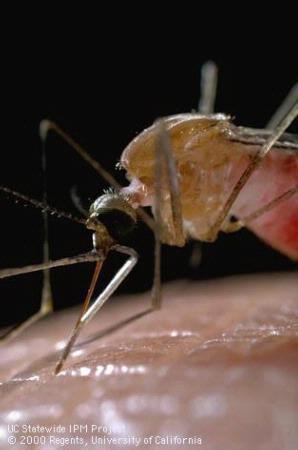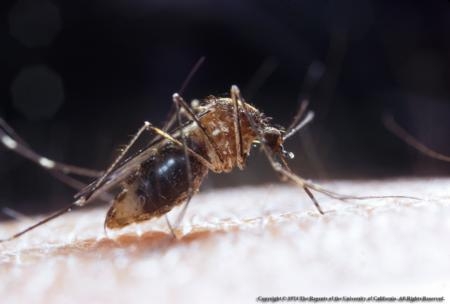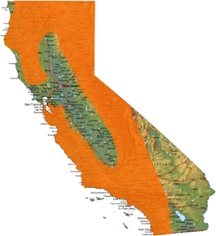
Posts Tagged: mosquitoes
Managing Mosquitoes on the Farm
Farming operations may create places where mosquitoes can breed and live. In addition to other potential problems, mosquitoes can carry diseases to people, livestock and pets -- some of which can be fatal.
Luckily there are several practical steps that can be taken on the farm or ranch to help keep mosquito born diseases from becoming established. UC’s free publication, Managing Mosquitoes on the Farm can provide instruction and guidance, including:
- Why you should care about mosquito control
- West Nile virus
- You may be raising the mosquito that is biting you
- Three basic principles of mosquito prevention
- Natural waters associated with farms
- Managing stagnant waters created by agricultural activities
- Irrigated fields for upland crops
- Mosquito-free irrigated pastures
- Rice
- Dairy operations
- Biological and chemical mosquito control
- Common mosquitoes and their life cycles

Mosquitoes
There are more than 50 species of mosquitoes in California. Several of them are able to transmit microbial organisms capable of causing human diseases such as encephalitis and malaria. They may also cause disease in livestock and pets. Mosquitoes can travel for miles and can be challenging to control.
In many places around the state local agencies have programs designed to keep populations in check. There are several ways we can help minimize the number of mosquitoes in our communities.
UC’s Mosquitoes: Intergrated Pest Management Around the Home publication provides much information about mosquitoes and how to best manage them.
Topics include:
- Identification
- Life cycle
- Public healthy and veterinary importance
- West Nile virus
- Management
Additional information and local resources can be found in these previous posts.
I will be out of the office next week, but will post a new article for you when I return on Monday, July 25!

County of Ventura Vector Control Program
Part of the County of Ventura Environmental Health Agency, the Vector Control Program (VCP) works to minimize the threat to public health from vectors capable of harboring or transmitting disease to humans.
The VCP monitors potential mosquito breeding sites to reduce the public’s chance of exposure to mosquito borne diseases such as: West Nile Virus, other types of Encephalitis, and Malaria. They also rely on the public to “eliminate backyard mosquito breeding sources and to inform VCP staff of any mosquito problems occurring in an area.” The mosquito complaint hotline is 805-658-4310.
Mosquito fish are successfully used to for mosquito control and are available for free for use in water sources such as ornamental ponds, swimming pools and animal watering troughs. The mosquito fish hotline is 805-662-6582.
In addition to mosquito monitoring and control, this county department works to reduce the likelihood of illness from plague and lyme disease. VCP staff is available for lectures and other outreach education venues. To find out more about the VCP as well as the threat of vector transmitted illnesses in Ventura County please visit their website.

Plague occurs in the foothills, plateaus, mountains and
foggy coastal belt areas in California (shaded areas on the map).
Map image from VCP website.
Managing Mosquitoes in Stormwater Treatment Devices
As air temperatures start to rise at this time of year, so too can the mosquito population. There are about 200 species of mosquitoes in the United States, and all require water to complete their life cycle. Although mosquitoes are plant pollinators, they are generally considered a nuisance to humans and can transmit disease.
The Clean Water Act requires states to develop and implement nonpoint source pollution management programs. While these developments are making steps towards improving our water, mosquito management is often overlooked during the planning stages of these projects.
To learn how to integrate mosquito management and stormwater treatment, please read UC’s free publication Managing Mosquitoes in Stormwater Treatment Devices that explains options available for reducing health risks, lowers costs associated with abatement and lessening legal liability.
